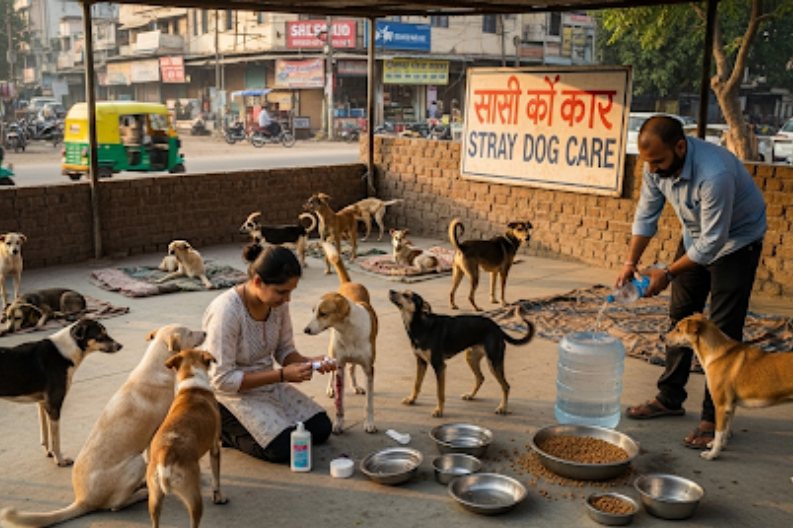The Supreme Court has issued a landmark ruling on how to manage stray dogs. The new framework balances public safety with animal welfare. Justice Vikram Nath led a three-judge bench that delivered the decision on Friday. It changes earlier restrictions and sets nationwide rules.
Stray dogs can now be released after sterilization and vaccination. Rabid or aggressive dogs will not be released. Justice Nath explained that these steps protect both the public and the animals.
The Municipal Corporation of Delhi (MCD) must create feeding zones in every ward. People can no longer feed dogs outside these areas. Anyone who violates this rule can face legal action. The MCD will also start a helpline so citizens can report violations. If NGOs or individuals block public servants, they may be fined up to ₹25,000.
Animal lovers can apply to the MCD to adopt stray dogs. The ruling also applies across India. States, union territories, and animal husbandry departments will receive notices. A registry will track pending stray dog cases in High Courts, and the Supreme Court will handle them in the future.
Delhi has around 4.4 lakh stray dogs, according to the 2021 Census. Punjab, Mohali, and Chandigarh face similar problems. Chandigarh has already shown that sterilization and vaccination programs can work. The city received praise in 2018 for its humane policies.
Animal activists gathered at Jantar Mantar before the ruling. They urged that strays should be treated with care and dignity. Their protests showed strong public support for animal welfare.
Municipal bodies now need to act quickly. They must set up feeding zones, sterilize dogs, and vaccinate them. Citizens need clear guidance on how to report problems. With proper action and cooperation, the new rules can create safer cities and better lives for stray dogs.



